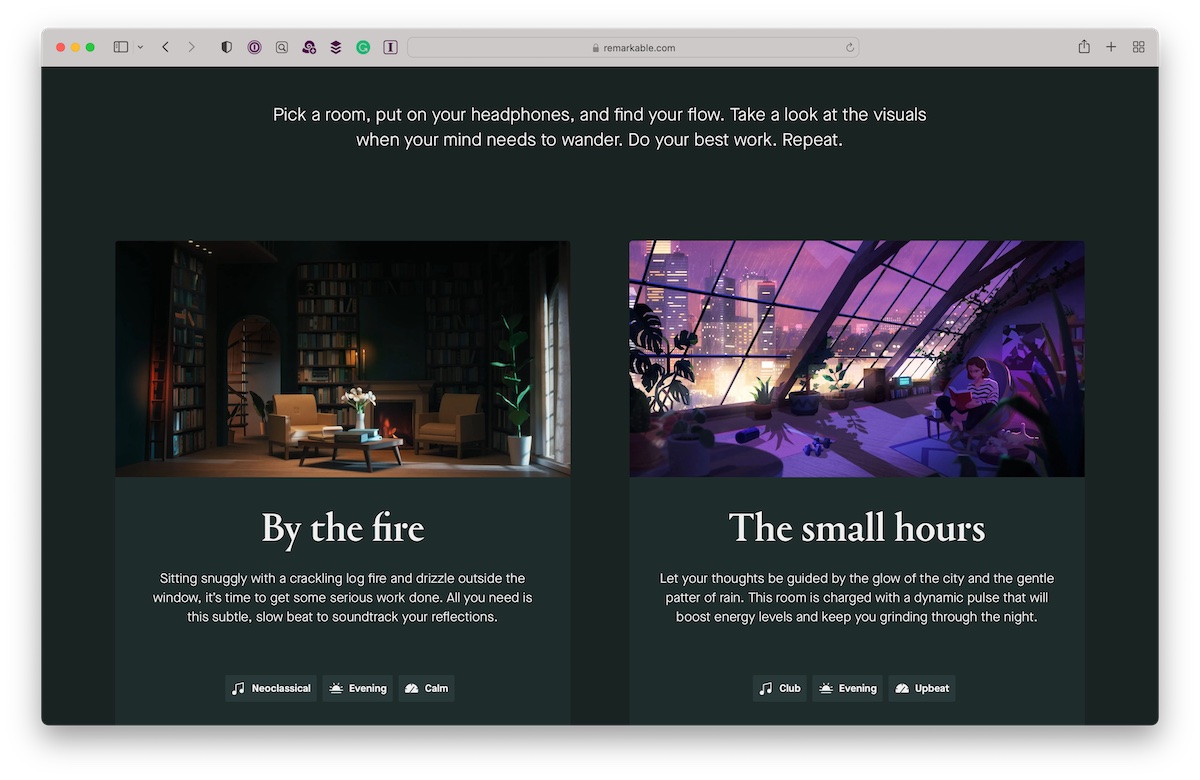reMarkable is a tech company that makes “paper tablets” — i.e., note-taking devices that use e-ink screens to simulate paper. The idea is to get the best of both paper-based notebooks (e.g., distraction-free writing, flow) and digital notebooks (e.g., improved findability and sharing, an endless supply of notes.) Per the company’s website, they aim to create “an elegant tool for thinking in the digital age, for those who love the inspiration and clarity they get when working on paper.”
So far, this vision has manifested in two forms: the tablet device, which is now in its second generation, and apps users install on their other devices (e.g., phones and laptops) to sync their notes. But now, the company has released another “product” to help users be more focused and productive.
I use quotes around the word product because this offering doesn’t fit my conception of what a product is. (And to be clear, the company isn’t positioning it as such.) Perhaps it’s best thought of as a marketing initiative, but one that may be put to use by customers — and beyond, since it’s available to everyone via the reMarkable website.
The offering is called Room to Think, and it consists of a set of six “virtual spaces” designed “to help you find your focus and do your best work.” The company promises these virtual spaces will enable you to “escape from your desk to your favorite place to work.”

reMarkable’s Room to Think web page
So what are these “virtual spaces”? They’re animated two-dimensional environments with soundtracks. In other words, videos. The intent is that you run them in fullscreen mode on your computer while you work close by. Ostensibly, you’ll do so on a reMarkable tablet, but of course, you could also use pen and paper or read a book or any other non-computer-based activity. (Obviously, these animations take over your computer’s display, so that rules out working there — unless you’re using a secondary display.)
Although “wallpaper” films have been around for a long time (see Andy Warhol’s Empire and YouTube videos of fireplaces), I find reMarkable’s offering interesting. Consider how it’s positioned: as a way of repurposing your computer’s screen from a source of distraction to a means of reclaiming your attention. Also, it’s offered alongside reMarkable’s offerings, reinforcing its messaging as a company dedicated to helping its customers reclaim their attention. It’s also interesting to note these ambient experiences are labeled “rooms,” as though the intent is for you to inhabit them — mentally, of course — while you focus.
I’ve only used a reMarkable tablet in passing, so I can’t speak to the usefulness of the device itself. But I spent some time with the “small hours” virtual space and found it pleasant. I doubt it’ll transform the quality of my attention at work, given that most of my work happens on the computer itself, but it seems like a good option when I’m sketching on paper or on my iPad. Calling these videos “virtual spaces” may be overselling them, but again, it’s in part a marketing initiative.
But even so, the concept is intriguing. Our devices don’t have to constantly clamor for our attention; they can also be sources of calm and uneventfulness — a bit of quiet in the eye of the storm. It’s fascinating to see a tech company exploring this angle. (I learned about reMarkable’s virtual spaces through Vojislav Dimitrijevic’s YouTube channel, which is a fantastic source of information on e-ink-based note-taking devices.)